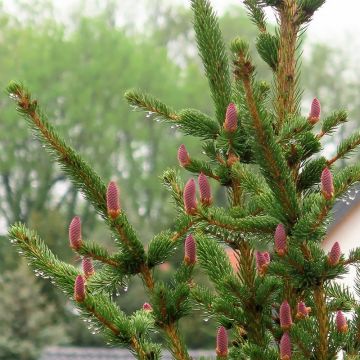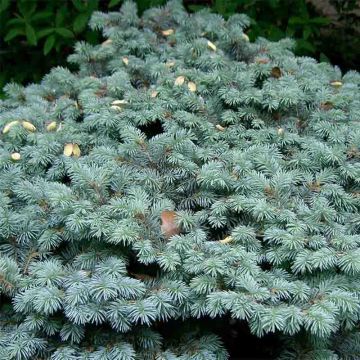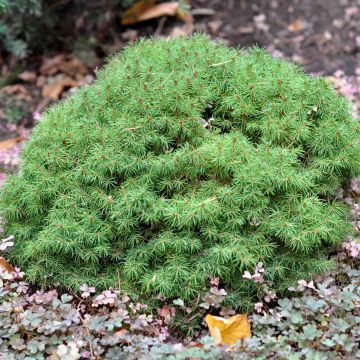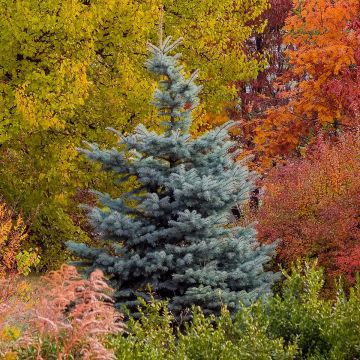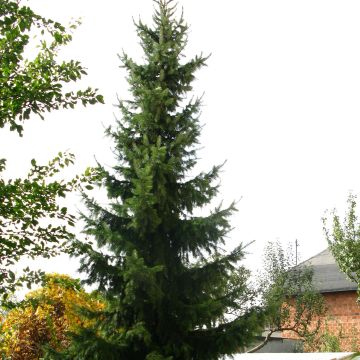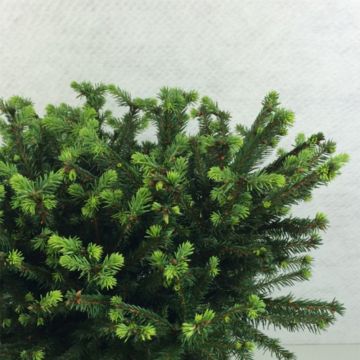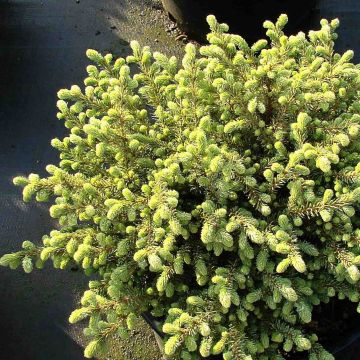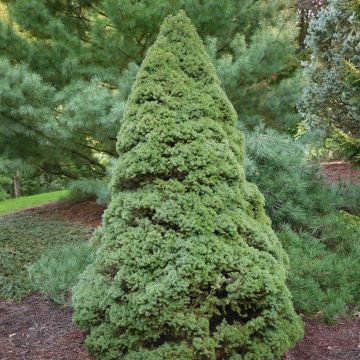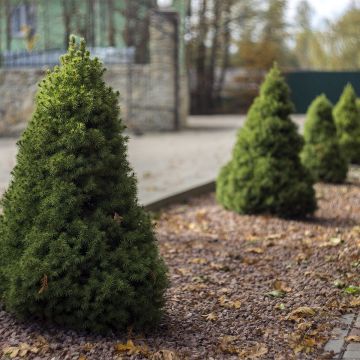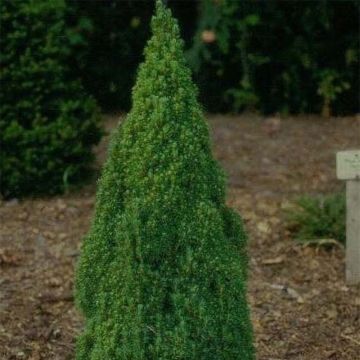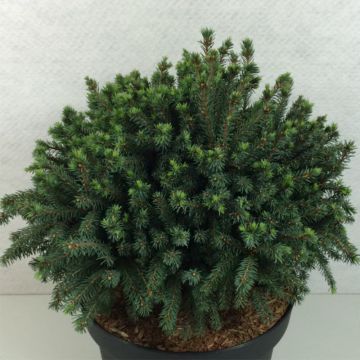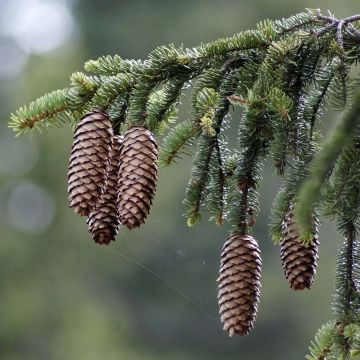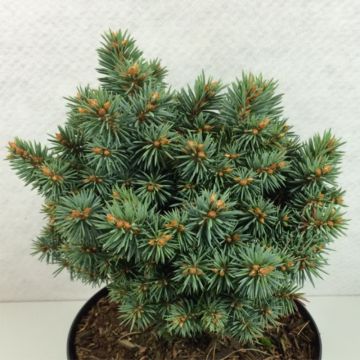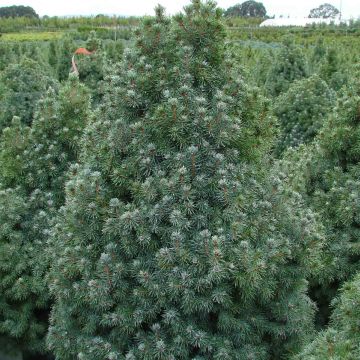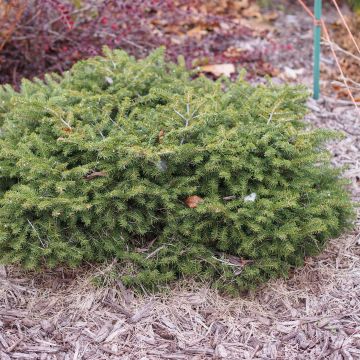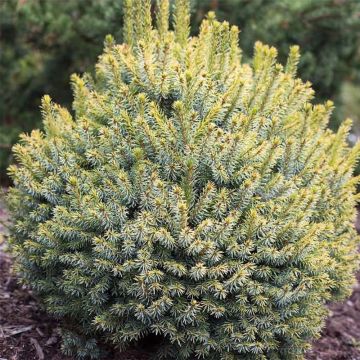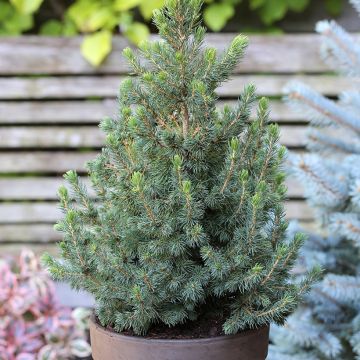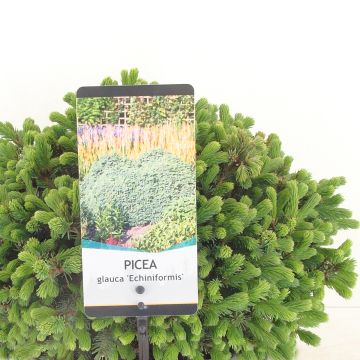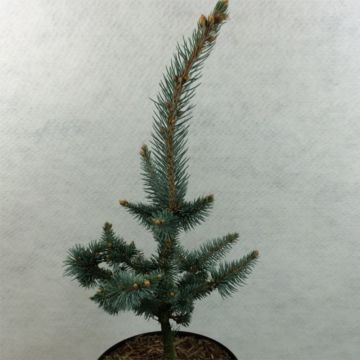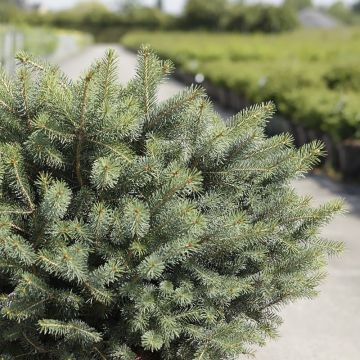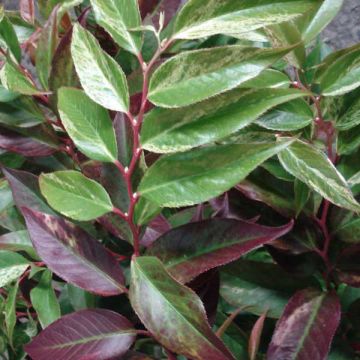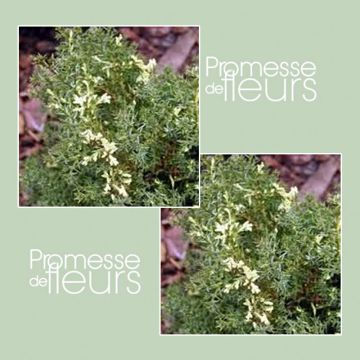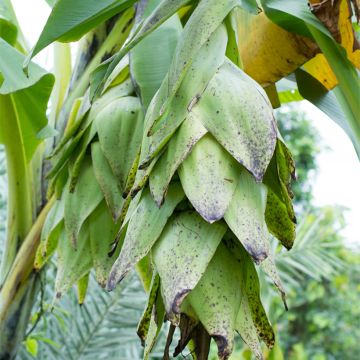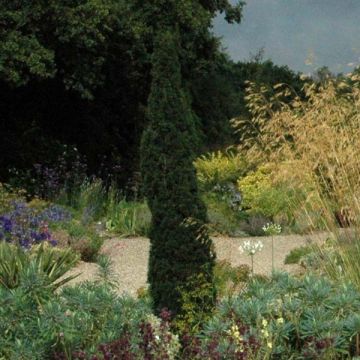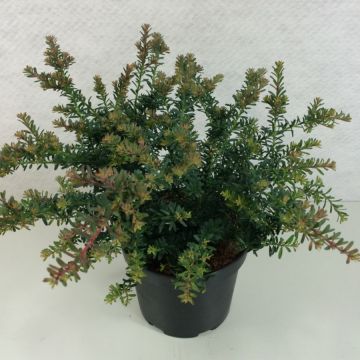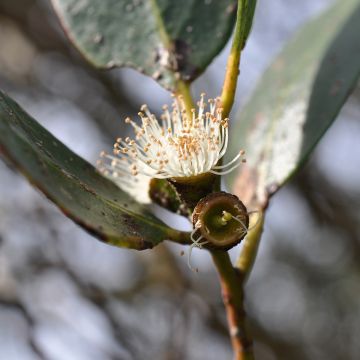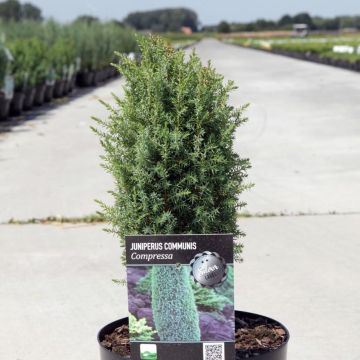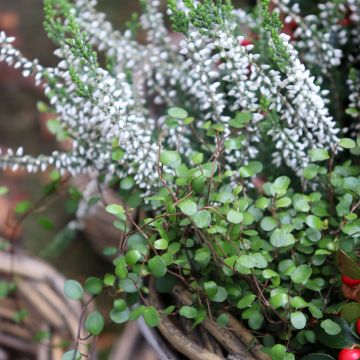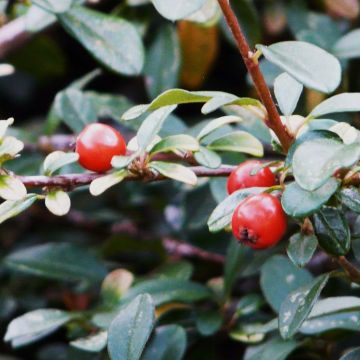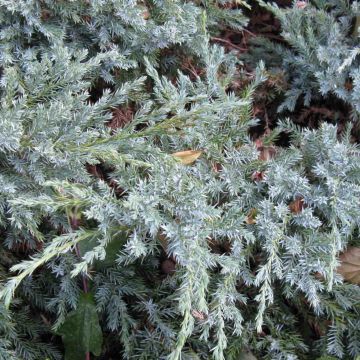Shipping country and language
Your country of residence may be:
Your country of residence is:
For a better user experience on our website, you can select:
Your shipping country:
Andorra
Austria
Belgium
Bulgaria
Canada
Chile
Croatia
Cyprus
Czechia
Denmark
Estonia
Finland
France
Germany
Greece
Hungary
Iceland
Ireland
Italy
Latvia
Lithuania
Luxembourg
Malta
Monaco
Netherlands
Poland
Portugal
Romania
Slovakia
Slovenia
Spain
Sweden
Switzerland
United Kingdom
We only deliver seed and bulb products to your country. If you add other products to your basket, they cannot be shipped.
Language:
French
German
Spanish
English
My Account
Hello
My wish lists
Plantfit
Log in / Register
Existing customer?
New customer?
Create an account to track your orders, access our customer service and, if you wish, make the most of our upcoming offers.
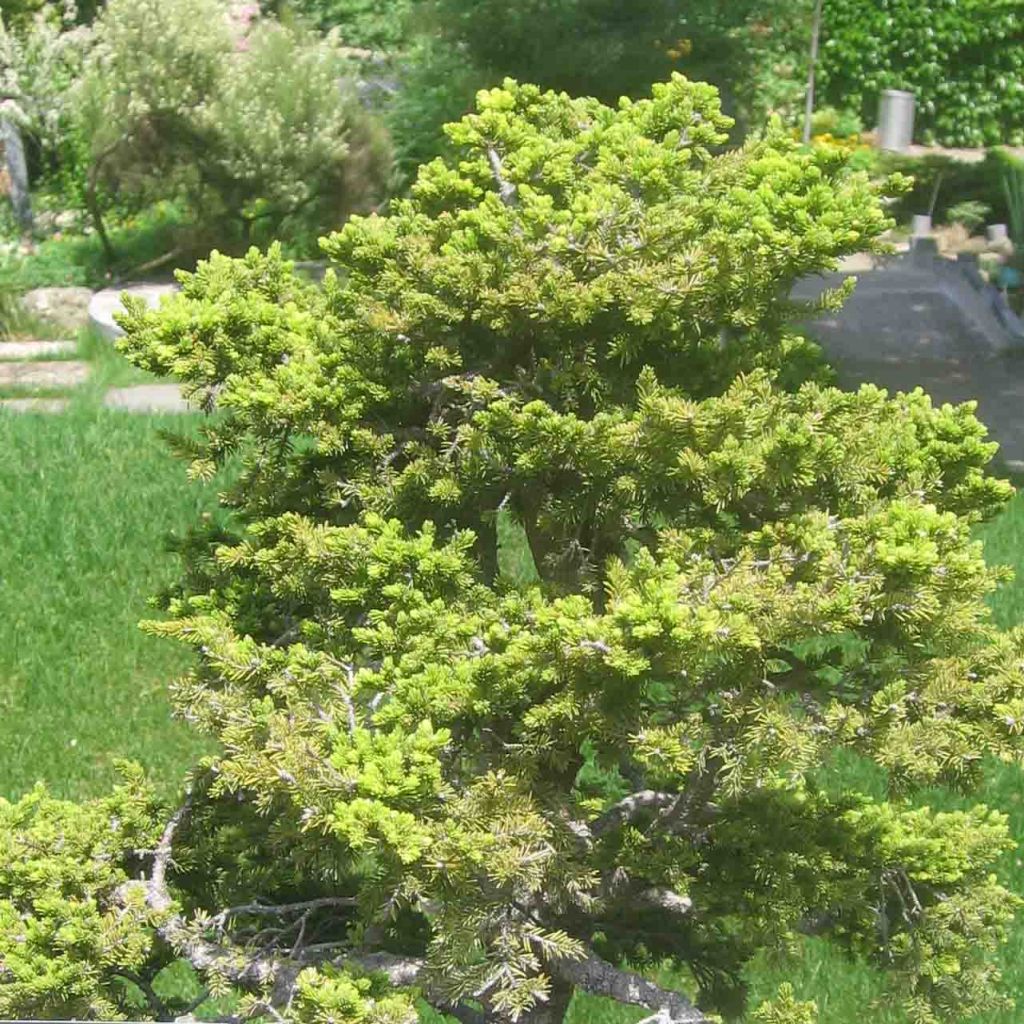

Picea jezoensis subsp. hondoensis
Picea jezoensis subsp. hondoensis
Picea jezoensis var. hondoensis
Hondo Spruce
Hello, I received my order very quickly and I thank you for that. However, the tree, a Picea jezoensis, is not the most beautiful. It doesn't have a top and several water inside branches are dead. Yours sincerely, Michel Otto
Michel O., 09/03/2017
Why not try an alternative variety in stock?
View all →Order in the next for dispatch today!
Dispatch by letter from €3.90.
Delivery charge from €5.90 Oversize package delivery charge from €6.90.
More information
This item is not available in your country.
Schedule delivery date,
and select date in basket
This plant carries a 24 months recovery warranty
More information
We guarantee the quality of our plants for a full growing cycle, and will replace at our expense any plant that fails to recover under normal climatic and planting conditions.
From €5.90 for pickup delivery and €6.90 for home delivery
Express home delivery from €8.90.
Does this plant fit my garden?
Set up your Plantfit profile →
Description
Picea jezoensis subsp. hondoensis, also known as Hondo spruce or Japanese spruce, is a large evergreen conifer quite rare in cultivation, native to the high mountains of southern Japan. It grows in a broad and conical crown. Its young spring shoots are a beautiful silver colour, turn light and then medium green as the seasons progress, while thin pendulous green or orange cones, appear on its needle-like foliage. The decorative red-brown bark cracks with age. It is a species to be planted in isolation and reserved for large spaces, or cultivated as a bonsai. It enjoys cool and humid climates and a shaded to semi-shaded exposure.
Picea jezoensis subsp. hondoensis is a conifer belonging to the pinaceae family, originating from an isolated population that grows at high altitudes in the rainforests of central Honshu, Japan. In its natural environment, it grows rapidly and has a characteristic conical or pyramid-shaped habit with a broad base. This tree can reach heights of 30 to 50 m (98 ft 5 in to 164 ft) and its trunk can reach 2 m (6 ft 7 in) in diameter, but rarely more than 20 m (65 ft 7 in) in cultivation. This species is traditionally used for its wood and paper production in its country of origin.
It produces rigid branches that are slightly upright, layered and decreasing in length from the lower part of the crown to the top. They are covered with rounded clusters of short and flattened needles showing a white stomatal band on their undersides. Its pale fawn to orange spring buds, open into distinctly silver young shoots, which turn a bright green before darkening slightly. The cylindrical, pendulous cones are 4 to 7 cm (1.6 to 2.8 in) long and 2 cm (0.8 in) wide when closed, 3 cm (1.2 in) when the scales open to release the black, winged seeds. Its thin bark flakes off in fine scales.
Resembling the Norway spruce in its significant growth and "Christmas tree" habit, the Picea jezoensis subsp. hondoensis is best planted as a specimen to be highlighted in a large garden. It does not tolerate heat or drought. It thrives in a mountain climate, with significant summer rainfall. It is very suitable for bonsai art. The architectural qualities of conifers naturally come to the fore in the design of a contemporary garden, which prefers the aesthetics of forms, silhouettes, and textures to flowers. These plants structurally define a bed, mark pathways and border the terrace, easily replacing the strong presence of pruned boxwood or holly. For example, in a "Zen" inspired garden, Hondo spruce can be associated with deciduous or evergreen species native to Japan (Japanese maples, Japanese cherry trees, bamboo, nandinas, aucuba...)
Picea jezoensis subsp. hondoensis in pictures
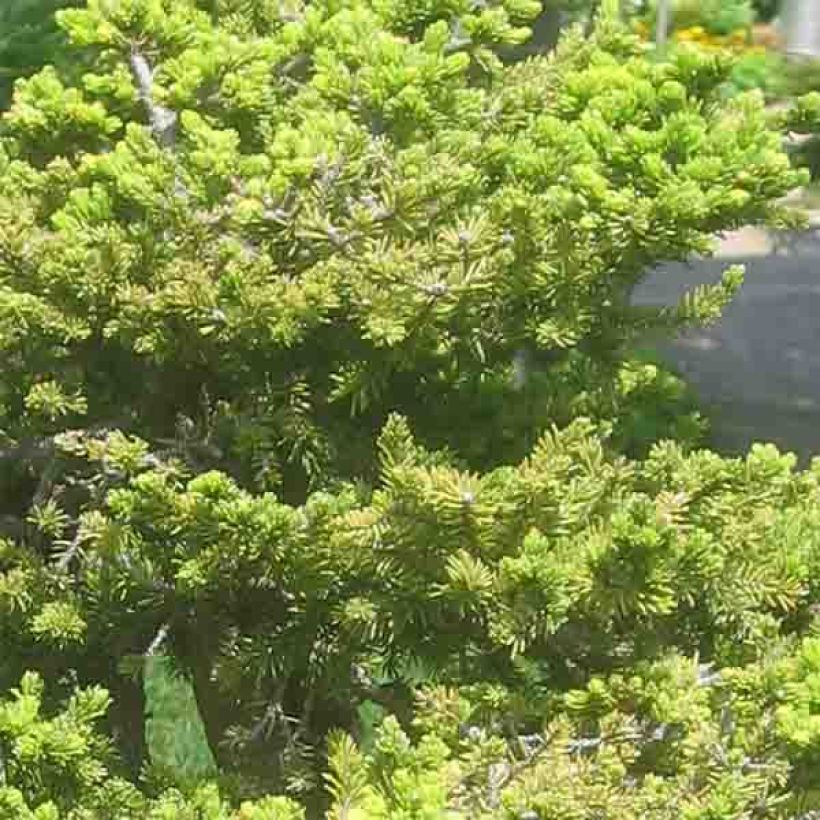

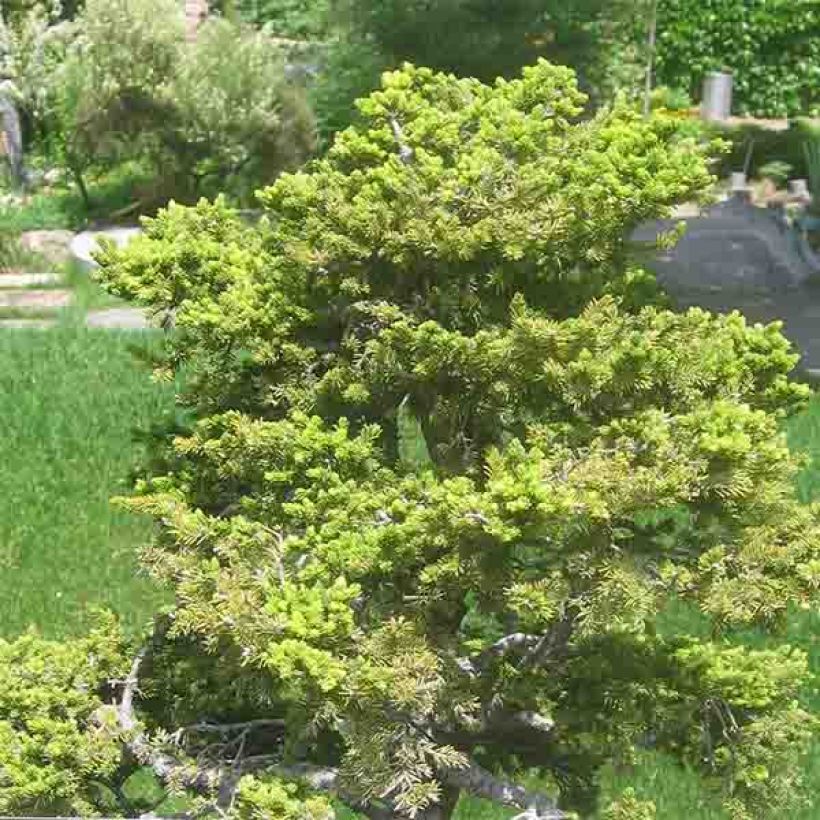

Plant habit
Flowering
Foliage
Botanical data
Picea
jezoensis
var. hondoensis
Pinaceae
Hondo Spruce
Southeast Asia
Other Picea
Planting and care
Picea jezoensis subsp. hondoensis is best planted from September to November and from February to June in deep, well-drained, light, slightly acidic to neutral, and always moist soil. It is a plant adapted to a humid mountain climate. A sandy, loamy, or humus-rich soil will be perfect. Choose a partially shaded to shady location, sheltered from prevailing winds. In excessively sunny and dry conditions, it will decline. Soak the root balls well before planting. Add organic fertilizer at planting and water generously in the first few years, and during prolonged drought. Apply a special conifer fertilizer every year in April and weed the soil in summer. This extremely hardy conifer dislikes heavy soils that become waterlogged in winter. Pruning is not necessary as this plant expresses its full potential when left to grow freely.
Planting period
Intended location
Care
- , onOrder confirmed
Reply from on Promesse de fleurs
Evergreen shrubs
Haven't found what you were looking for?
Hardiness is the lowest winter temperature a plant can endure without suffering serious damage or even dying. However, hardiness is affected by location (a sheltered area, such as a patio), protection (winter cover) and soil type (hardiness is improved by well-drained soil).

Photo Sharing Terms & Conditions
In order to encourage gardeners to interact and share their experiences, Promesse de fleurs offers various media enabling content to be uploaded onto its Site - in particular via the ‘Photo sharing’ module.
The User agrees to refrain from:
- Posting any content that is illegal, prejudicial, insulting, racist, inciteful to hatred, revisionist, contrary to public decency, that infringes on privacy or on the privacy rights of third parties, in particular the publicity rights of persons and goods, intellectual property rights, or the right to privacy.
- Submitting content on behalf of a third party;
- Impersonate the identity of a third party and/or publish any personal information about a third party;
In general, the User undertakes to refrain from any unethical behaviour.
All Content (in particular text, comments, files, images, photos, videos, creative works, etc.), which may be subject to property or intellectual property rights, image or other private rights, shall remain the property of the User, subject to the limited rights granted by the terms of the licence granted by Promesse de fleurs as stated below. Users are at liberty to publish or not to publish such Content on the Site, notably via the ‘Photo Sharing’ facility, and accept that this Content shall be made public and freely accessible, notably on the Internet.
Users further acknowledge, undertake to have ,and guarantee that they hold all necessary rights and permissions to publish such material on the Site, in particular with regard to the legislation in force pertaining to any privacy, property, intellectual property, image, or contractual rights, or rights of any other nature. By publishing such Content on the Site, Users acknowledge accepting full liability as publishers of the Content within the meaning of the law, and grant Promesse de fleurs, free of charge, an inclusive, worldwide licence for the said Content for the entire duration of its publication, including all reproduction, representation, up/downloading, displaying, performing, transmission, and storage rights.
Users also grant permission for their name to be linked to the Content and accept that this link may not always be made available.
By engaging in posting material, Users consent to their Content becoming automatically accessible on the Internet, in particular on other sites and/or blogs and/or web pages of the Promesse de fleurs site, including in particular social pages and the Promesse de fleurs catalogue.
Users may secure the removal of entrusted content free of charge by issuing a simple request via our contact form.
The flowering period indicated on our website applies to countries and regions located in USDA zone 8 (France, the United Kingdom, Ireland, the Netherlands, etc.)
It will vary according to where you live:
- In zones 9 to 10 (Italy, Spain, Greece, etc.), flowering will occur about 2 to 4 weeks earlier.
- In zones 6 to 7 (Germany, Poland, Slovenia, and lower mountainous regions), flowering will be delayed by 2 to 3 weeks.
- In zone 5 (Central Europe, Scandinavia), blooming will be delayed by 3 to 5 weeks.
In temperate climates, pruning of spring-flowering shrubs (forsythia, spireas, etc.) should be done just after flowering.
Pruning of summer-flowering shrubs (Indian Lilac, Perovskia, etc.) can be done in winter or spring.
In cold regions as well as with frost-sensitive plants, avoid pruning too early when severe frosts may still occur.
The planting period indicated on our website applies to countries and regions located in USDA zone 8 (France, United Kingdom, Ireland, Netherlands).
It will vary according to where you live:
- In Mediterranean zones (Marseille, Madrid, Milan, etc.), autumn and winter are the best planting periods.
- In continental zones (Strasbourg, Munich, Vienna, etc.), delay planting by 2 to 3 weeks in spring and bring it forward by 2 to 4 weeks in autumn.
- In mountainous regions (the Alps, Pyrenees, Carpathians, etc.), it is best to plant in late spring (May-June) or late summer (August-September).
The harvesting period indicated on our website applies to countries and regions in USDA zone 8 (France, England, Ireland, the Netherlands).
In colder areas (Scandinavia, Poland, Austria...) fruit and vegetable harvests are likely to be delayed by 3-4 weeks.
In warmer areas (Italy, Spain, Greece, etc.), harvesting will probably take place earlier, depending on weather conditions.
The sowing periods indicated on our website apply to countries and regions within USDA Zone 8 (France, UK, Ireland, Netherlands).
In colder areas (Scandinavia, Poland, Austria...), delay any outdoor sowing by 3-4 weeks, or sow under glass.
In warmer climes (Italy, Spain, Greece, etc.), bring outdoor sowing forward by a few weeks.
